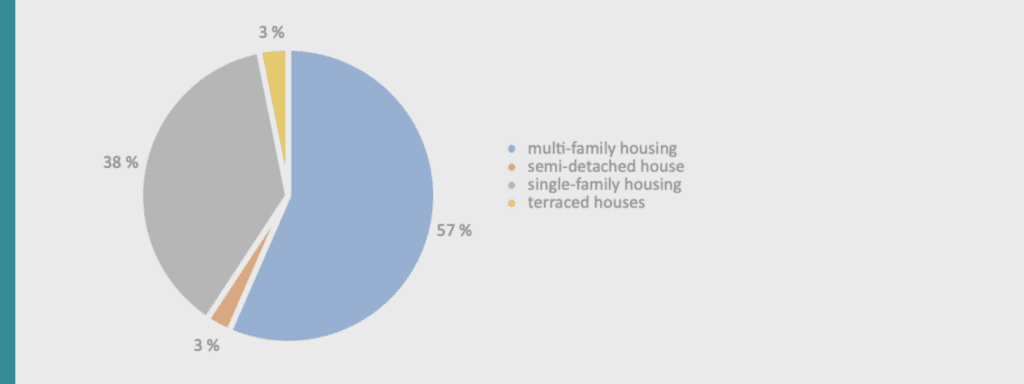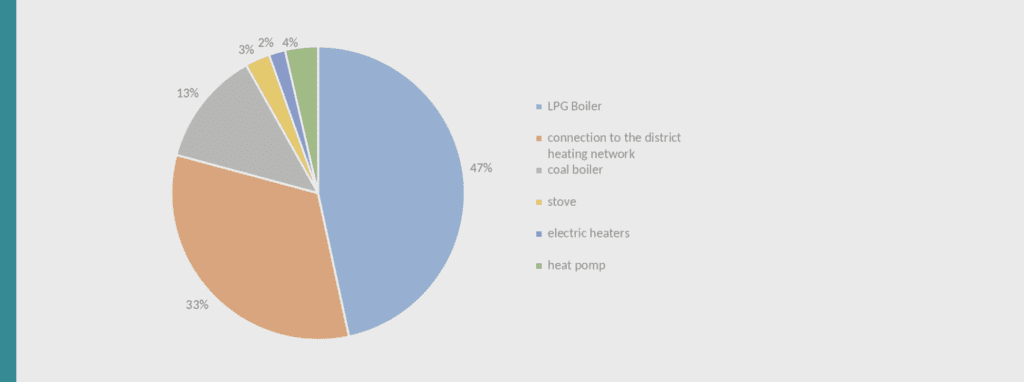Energy poverty is a significant problem in Poland. Before the pandemic, it affected 12% of Poland’s inhabitants. In 2020, the number increased to 21.4%. According to analysts, it was aggravated by job losses and falling wages, especially among people with the lowest and middle income. In Poland, the share of expenditure on electricity, gas and other fuels in the structure of household expenditure is twice as high as the EU average.
The vast majority of people experiencing energy poverty live in single-family houses. In 2016, it was 75.4% of all energy poor, i.e. 3.47 million people. This problem largely affects people living in rural areas and elderly people living alone. Energy poverty mainly affects the inhabitants of houses built in the years 1946–1960 (51%). The reason may be the low energy efficiency of these buildings, e.g. lack of thermal insulation or draughty windows.

The main energy source in Poland is coal. In 2020 it was mostly hard coal, with its share being 44.1%. Lignite came second with a share of 24.1 %. The total share of coal in electricity production was therefore 68.2%. Production from renewable energy sources accounted for 17.9 % and since 2014 it has increased by 5.4 percentage points. The most important carriers in the renewable group were wind energy, biomass and biogas. Solar energy had the smallest share, but it was characterized by the highest growth dynamics. In total, domestic electricity production amounted to 158 TWh and decreased by 3.6% compared to 2019. It was the second consecutive year of decline in domestic production. It was the highest in 2017 and 2018, when it exceeded 170 TWh.

Households’ energy consumption accounts for approx. 25% of the total final energy consumption in the country. The most important direction of energy use in the household sector is space heating, the share of which amounts to about 63%. Approximately 17% of energy is used for heating water, 11% for lighting and household appliances, and 9% for cooking meals.
According to the latest study by the Central Statistical Office on energy consumption in households, the most frequently used are solid fuels, mainly hard coal and fuel wood. They were the most frequently used for space heating (by 45.4% of households). These fuels were used also for water heating 25.6% of households), and much ess for cooking (3.2%). District heat was used in 40.4% of all dwellings, mainly in cities where it was the predominating commodity (58.3%). Moreover 31.5% of households, i.e. 78.2% of all district heating consumers, obtained heated water from the district installation. Natural gas was used in 55.7% of households, but more than half of the consumers (51.9%) used it only for cooking, and only 14.0% for space heating. Such a consumption structure was the outcome of a long-lasting practice of installing gas networks in multi-family buildings only for cooking purposes. In those areas of the country which have no access to natural gas, the stationary use of LPG was more common (34.0%), though it was almost exclusively used for cooking (33.9%). Fuel wood was used by 29.9% of households. It was the only renewable energy commodity used by households on a massive scale. It was usually burnt in the same boilers and stoves as hard coal, either together with coal or interchangeably. Apart from fuel wood, households also used other types of biomass, though they were far less common than wood. Solar collectors were used by one out of 52 households, and heat pumps by as few as one out of 200. Electricity was commonly used by households, mainly for lighting as well as electrical appliances and electronic devices. The use of electricity for heating purposes was insignificant (5.1%), due to high prices and the availability of cheaper substitutes. Electricity was used for cooking and space heating, usually on a secondary basis, whereas its use for water heating was common mainly in those areas which did not have access to the heating or gas network.

